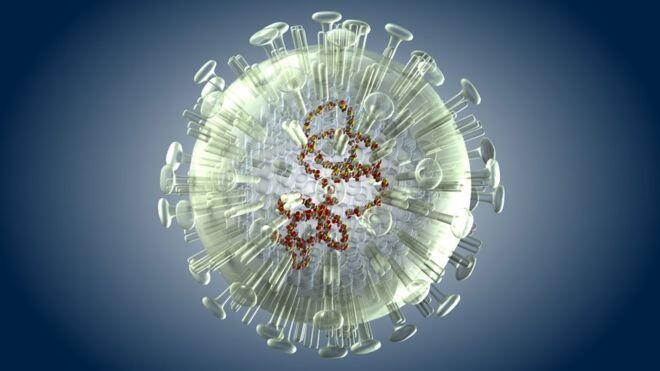A person’s chance of falling ill from a new strain of flu are at least partly determined by the first strain they ever encountered, a study suggests.
Research in Science journal looked at the 18 strains of influenza A and the hemagglutinin protein on its surface.
They say there are only two types of this protein and people are protected from the one their body meets first, but at risk from the other one.
A UK expert said that could explain different patterns in flu pandemics.
‘Lollipop flavours’
The researchers, from University of Arizona in Tucson and the University of California, Los Angeles, suggest their findings could explain why some flu outbreaks cause more deaths and serious illnesses in younger people.
The first time a person’s immune system encounters a flu virus, it makes antibodies targeting hemagglutinin – a receptor protein that sticks out of the surface of the virus – like a lollipop.
Even though there are 18 types of influenza A, there are only two versions – or “flavours” of hemagglutinin.
The researchers, led by Dr Michael Worobey, classed them as “blue” and “orange” lollipops.
They said people born before the late 1960s were exposed to “blue lollipop” flu viruses – H1 or H2 – as children.
In later life they rarely fell ill from another “blue lollipop” flu – H5N1 bird flu, but they died from “orange” H7N9.
Those born in the late 1960s and exposed to “orange lollipop” flu – H3 – have the opposite pattern.
His team looked at cases of H5N1 and H7N1 – two avian (bird) flus which have affected hundreds of people, but have not developed into pandemics.
The researchers found a 75% protection rate against severe disease and 80% protection rate against death if patients had been exposed to a virus with the same protein motif when they were children.
‘Compelling’
Dr Worobey said the finding could explain the unusual effect of the 1918 “Spanish flu” pandemic, which was more deadly among young adults.
“Those young adults were killed by an H1 virus and from blood analysed many decades later there is a pretty strong indication that those individuals had been exposed to a mismatched H3 as children and were therefore not protected against H1.
“The fact that we are seeing exactly the same pattern with current H5N1 and H7N9 cases suggests that the same fundamental processes may govern both the historic 1918 pandemic and today’s contenders for the next big flu pandemic.”
Jonathan Ball, professor of molecular virology at University of Nottingham, said: “This is a really neat piece of work and provides a reason why human populations have been susceptible to different strains of bird influenza over the past 100 years or so.
“The findings are based on analysis of patient records and they certainly need validating in the laboratory, but nonetheless the results are pretty compelling.”











